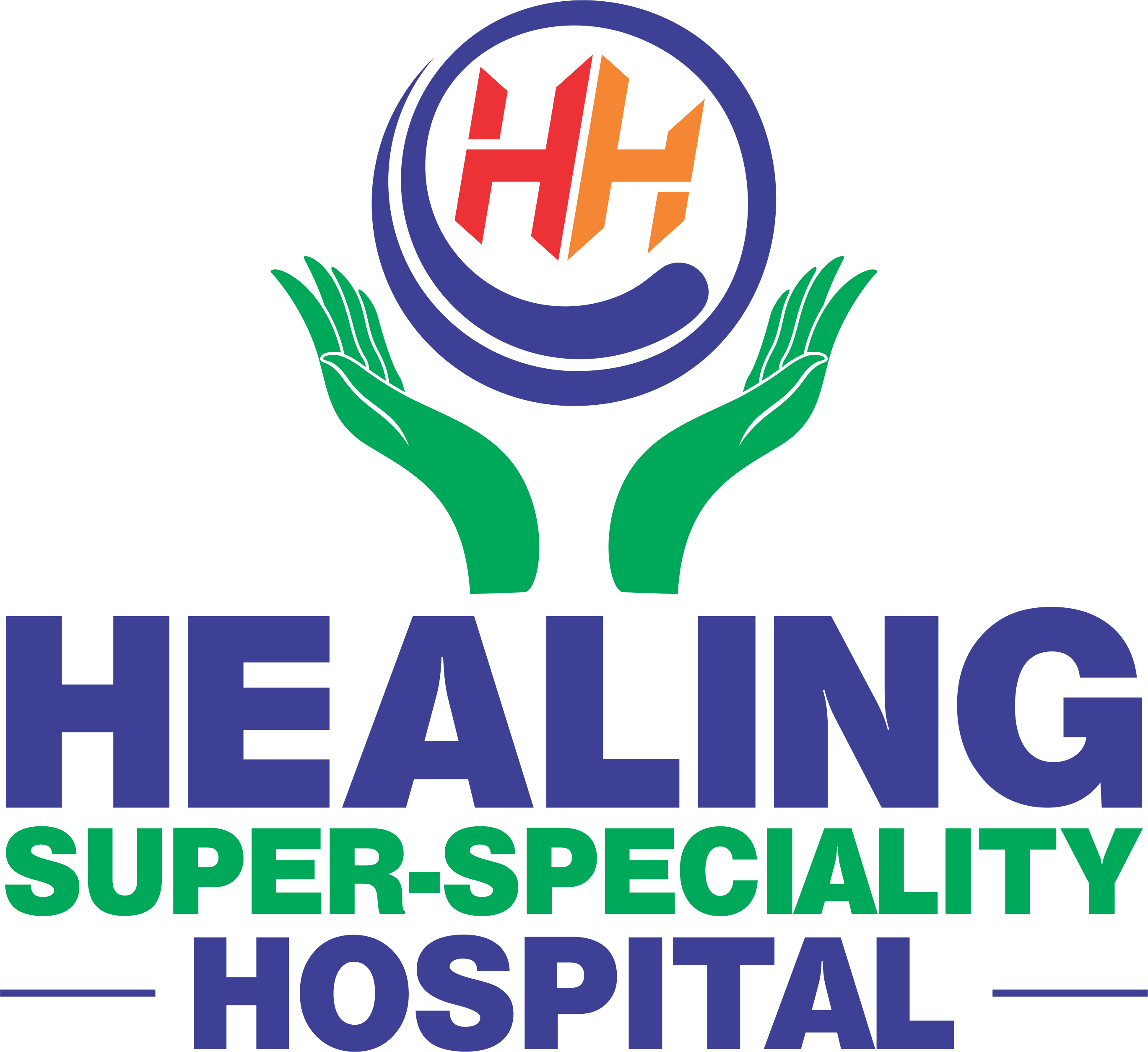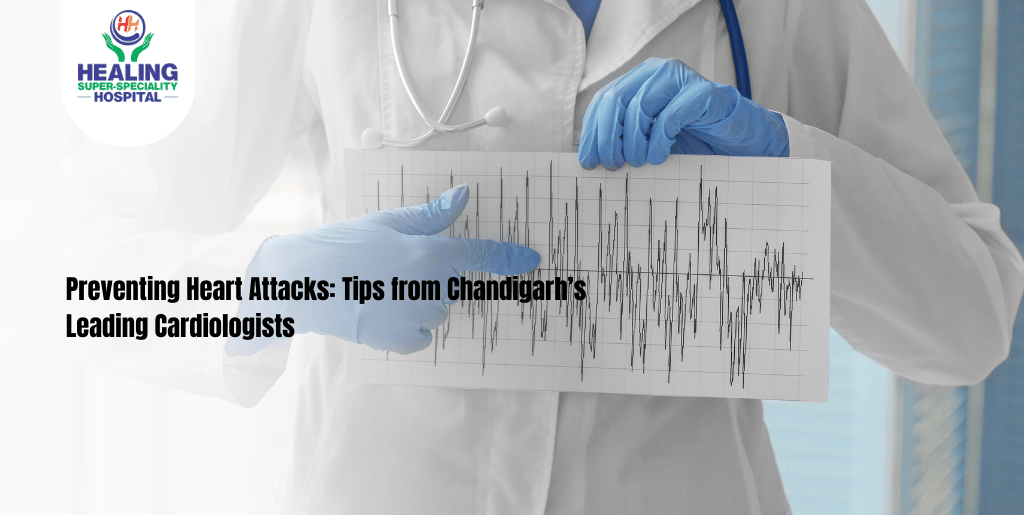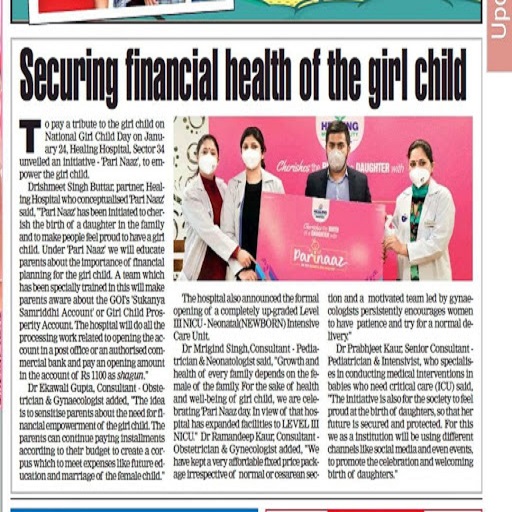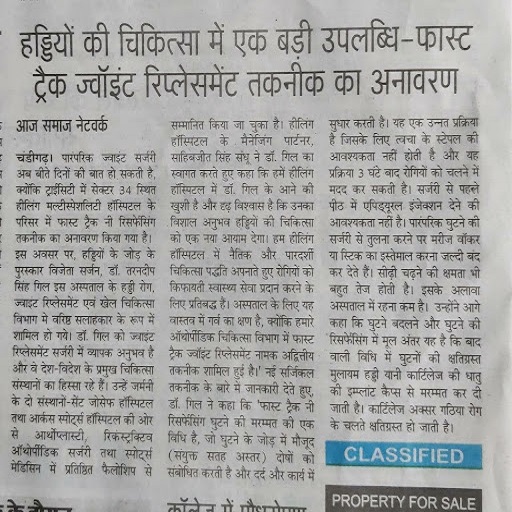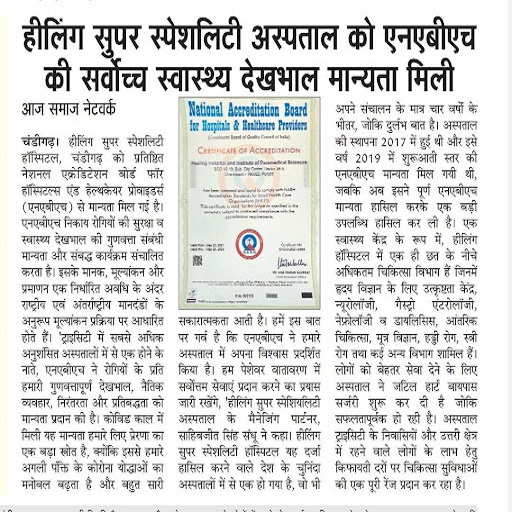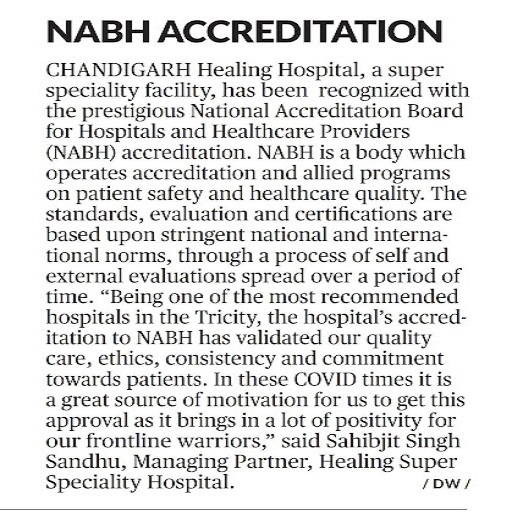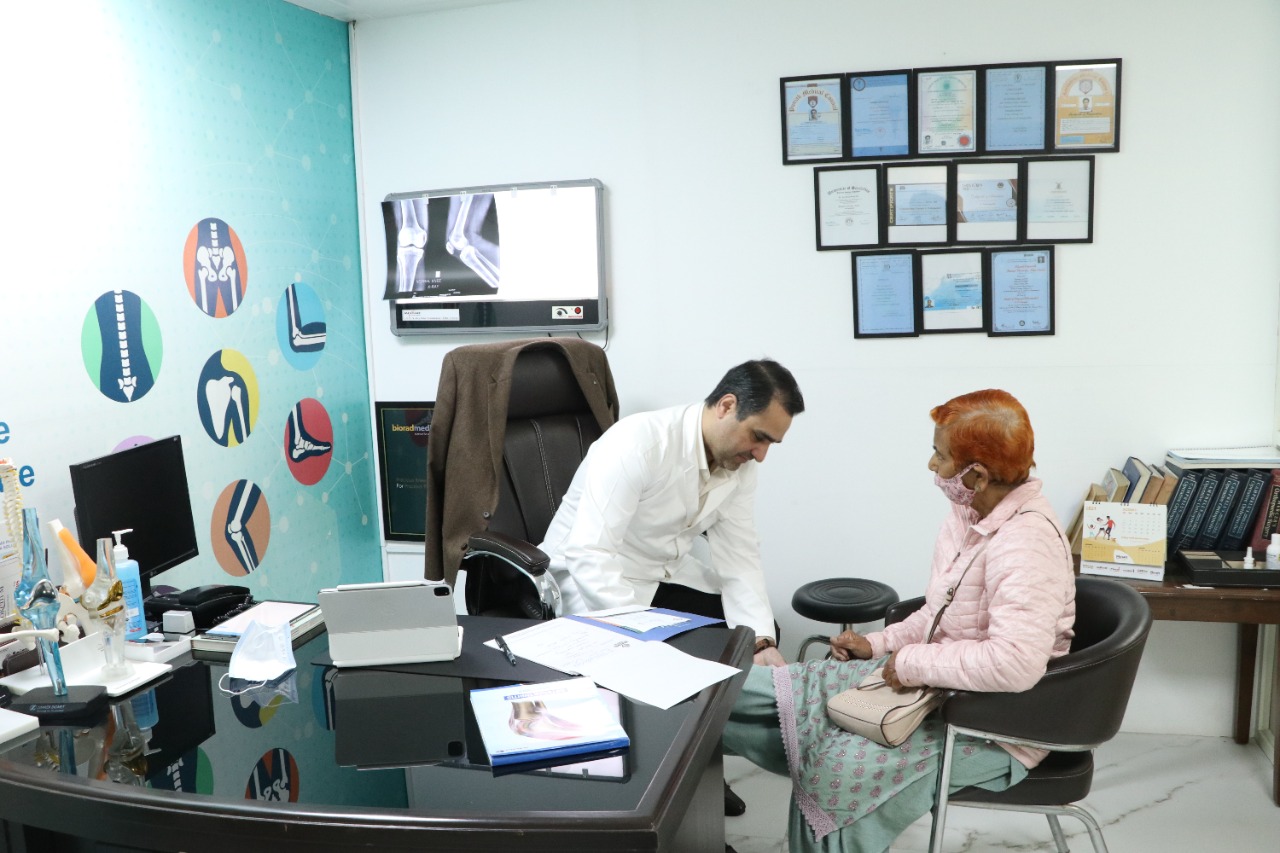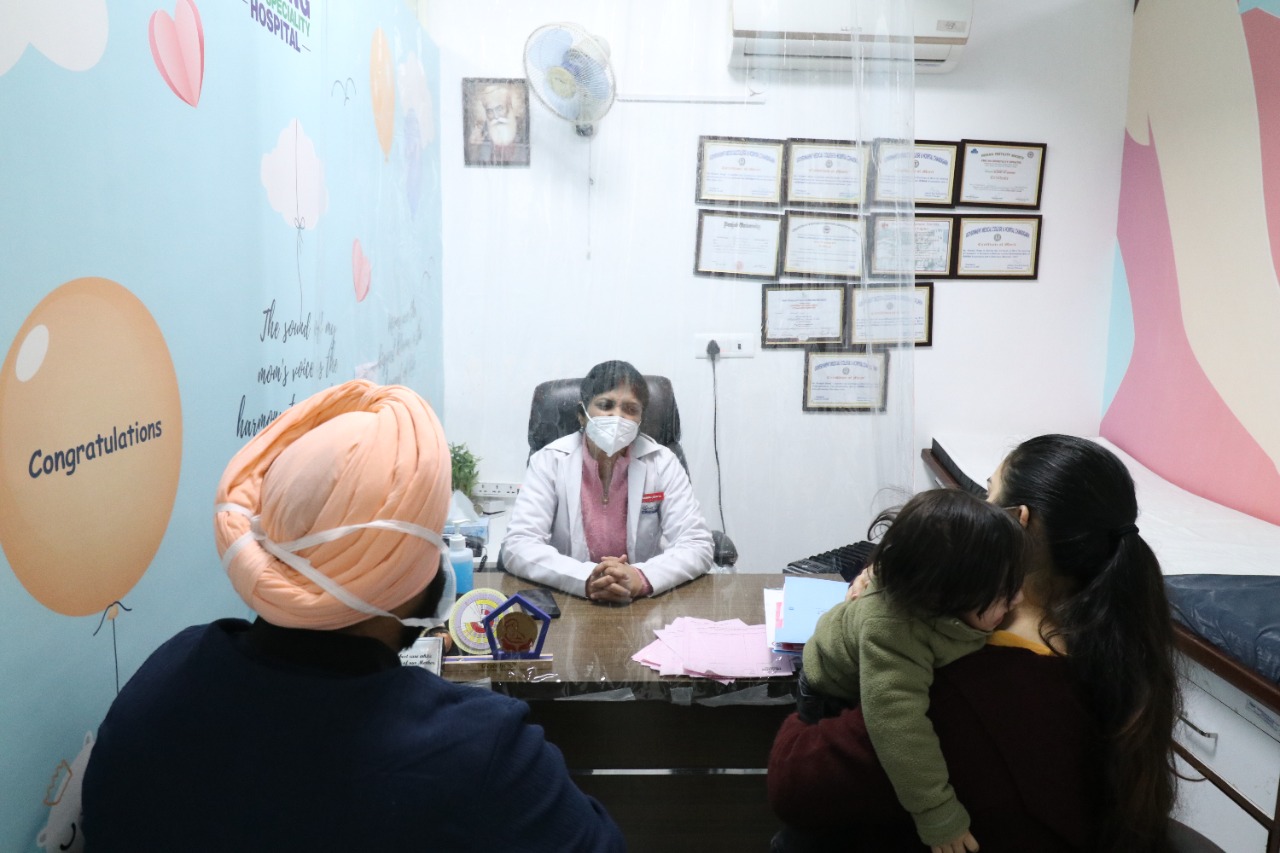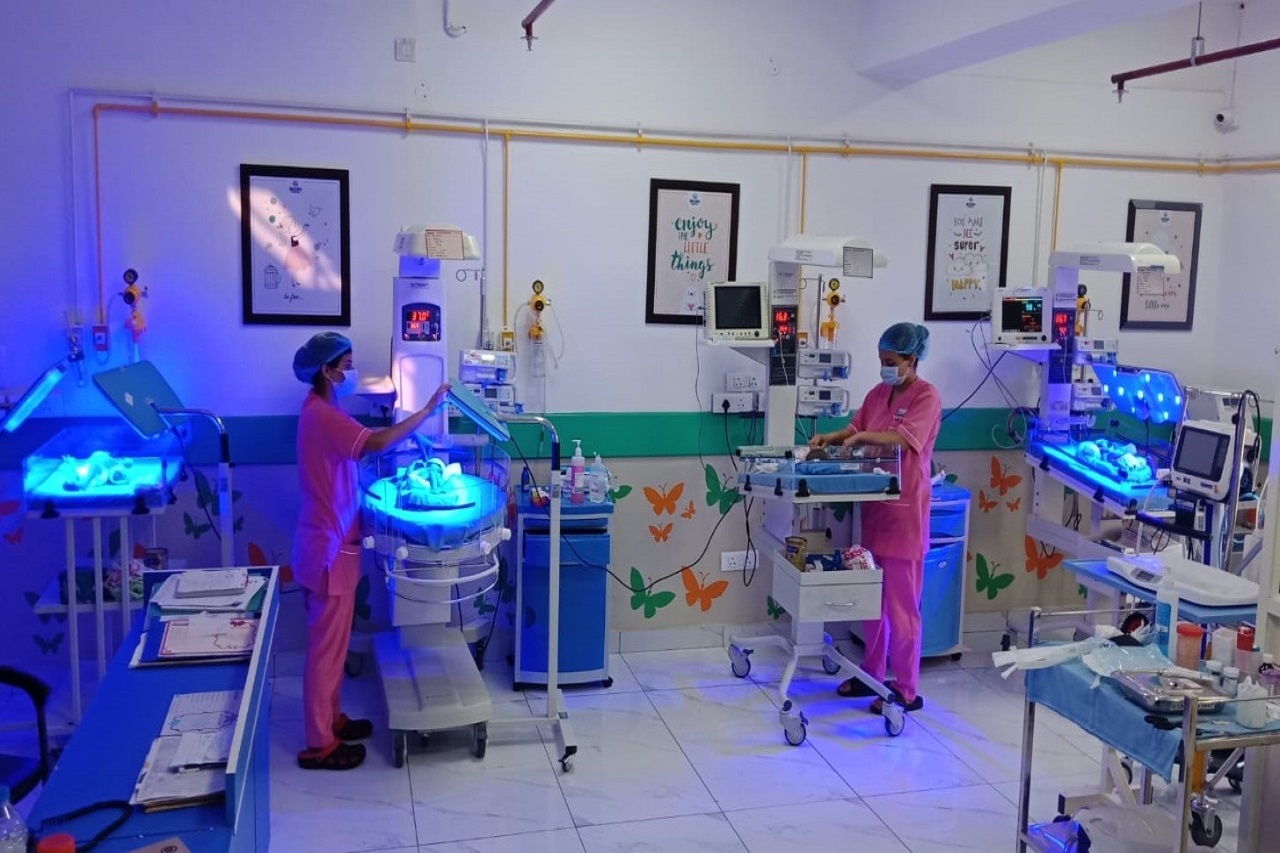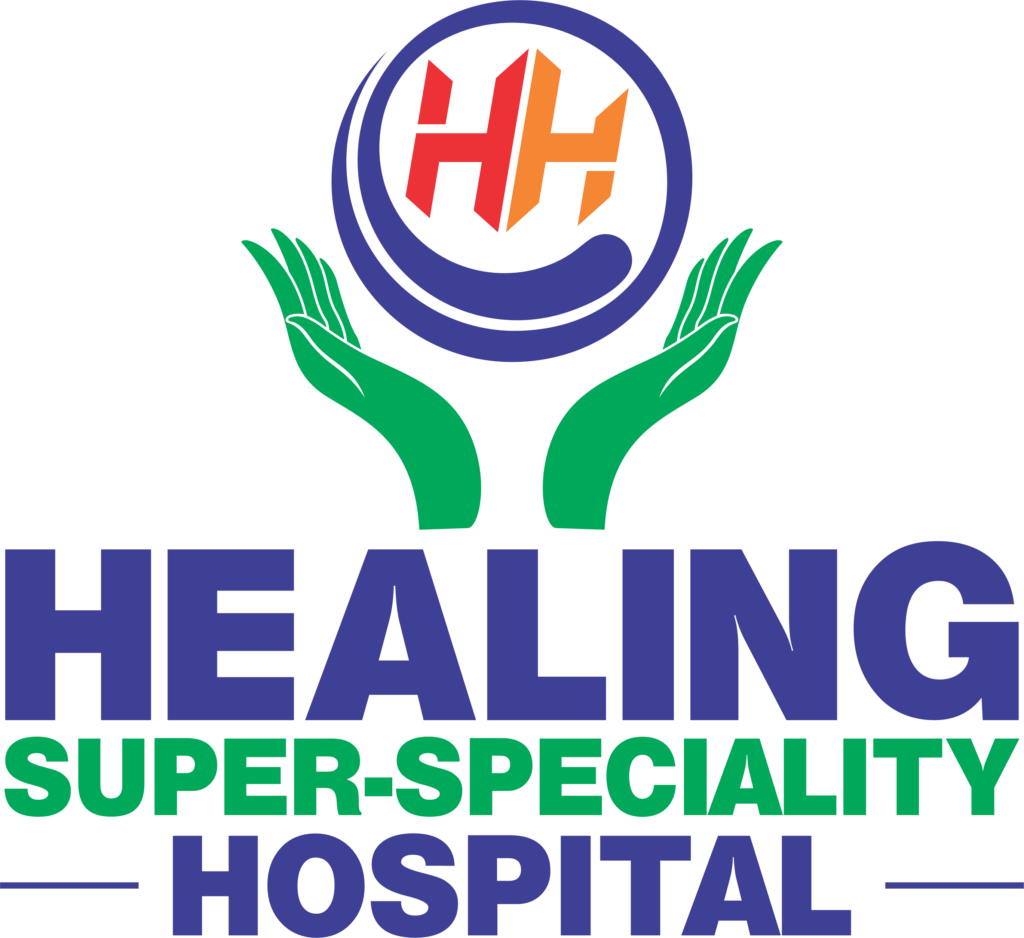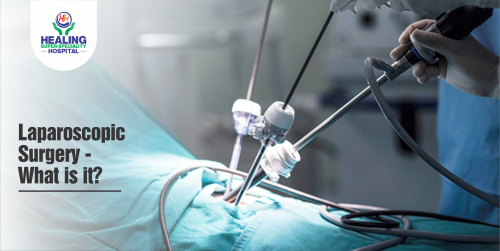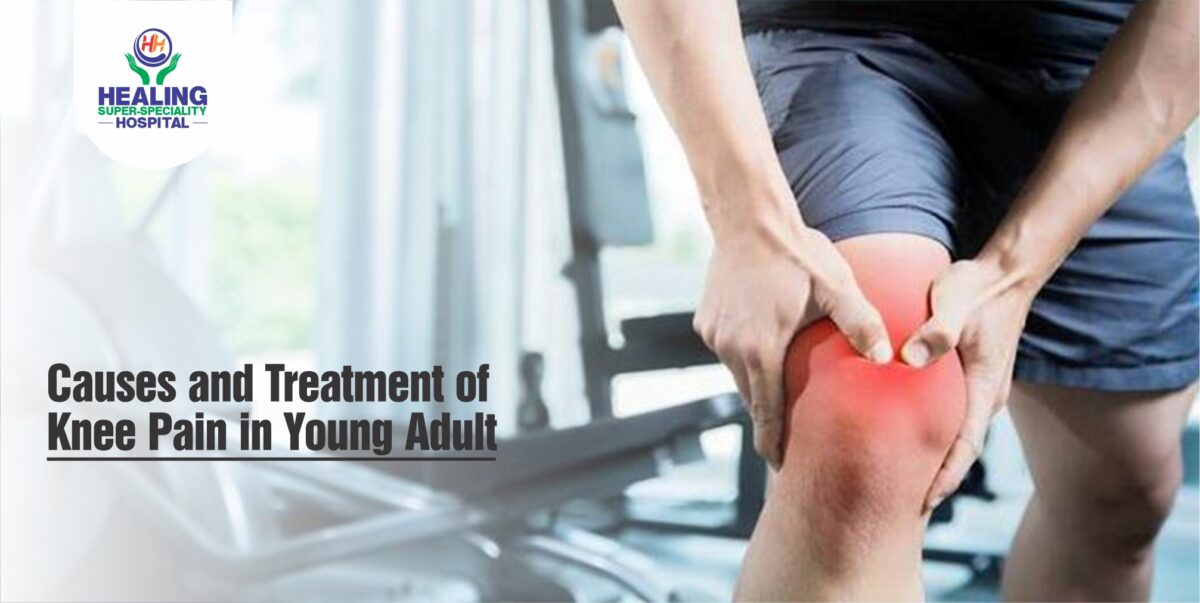Heart attack
A heart attack or a myocardial infarction occurs when an artery that sends blood and oxygen to the heart is blocked. Fatty, cholesterol-containing deposits build up over time, forming plaques in the heart’s arteries. If a plaque ruptures, a blood clot can form. The clot can block arteries, causing a heart Attack Treatment in Chandigarh. During a heart attack, a lack of blood flow causes the tissue in the heart muscles to die.
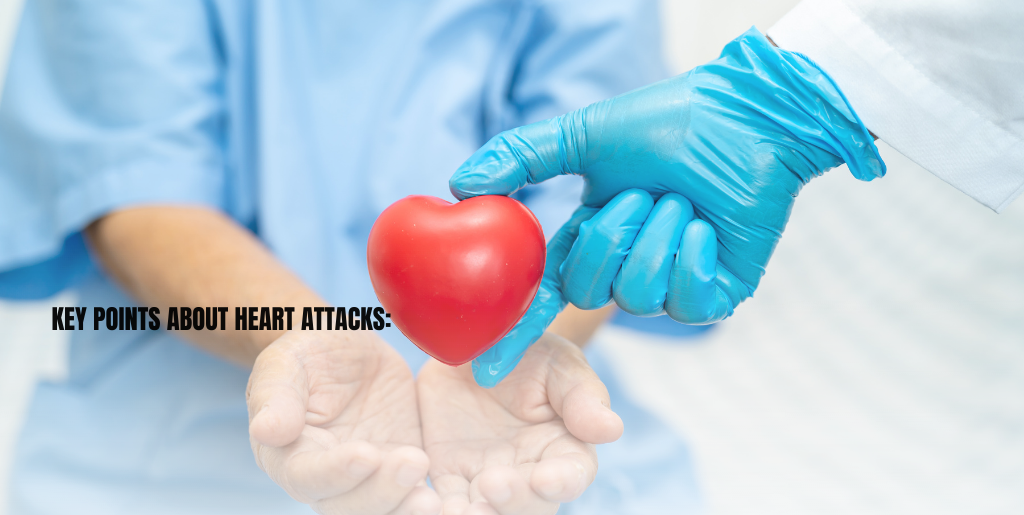
KEY POINTS ABOUT HEART ATTACKS:
- Causes:
Coronary heart disease (CHD) is the leading cause of heart attacks.
CHD is a condition in which the major blood vessels (coronary arteries) that supply the heart muscle become clogged by a build-up of deposits of fatty substances, known as plaques.
Before a heart attack, 1 of the plaques bursts (ruptures), causing a blood clot to develop at the site of the rupture.
The clot may block the supply of blood to the heart, triggering a heart Attack.
- Symptoms:
Symptoms of a heart attack can include:
- chest pain – a feeling of pressure, heaviness, tightness or squeezing across your chest
- pain in other parts of the body – it can feel as if the pain is spreading from your chest to your arms (usually the left arm, but it can affect both arms), jaw, neck, back and tummy
- feeling lightheaded or dizzy
- sweating
- shortness of breath
- feeling sick (nausea) or being sick (vomiting)
- an overwhelming feeling of anxiety (similar to a panic attack)
- coughing or wheezing
The chest pain is often severe, but some people may only experience minor pain, similar to indigestion.
While the most common symptom is chest pain, symptoms can vary from person to person. Some people may have other symptoms such as shortness of breath, feeling or being sick and back or jaw pain without any chest pain.
- Consequences:
If not treated promptly, a heart attack can cause permanent heart damage, heart failure, and even death.
- Treatment:
Immediate medical attention is crucial. Treatment may include:
- medications to dissolve clots,
- procedures to open blocked arteries, or surgery.
- Prevention:
There are some steps you can take to reduce your risk of having a heart attack (or having another heart attack):
- smokers should quit smoking
- lose weight if you’re overweight or obese
- do regular exercise – adults should do at least 150 minutes (2 hours and 30 minutes) of moderate-intensity aerobic exercise each week, unless advised otherwise by the doctor in charge of your care
- eat a low-fat, high-fibre diet, including wholegrains and at least 5 portions of fruit and vegetables a day
- moderate your alcohol consumption
Risk factors
Heart attack risk factors include:
- Age: Men aged 45 and older and women age 55 and older are more likely to have a heart attack than are younger men and women.
- Tobacco use: This includes smoking and long-term exposure to passive smoking. If you smoke, quit immediately.
- High blood pressure: Over time, high blood pressure can damage arteries that lead to the heart. High blood pressure that occurs with other conditions, such as obesity, high cholesterol or diabetes, increases the risk even more.
- High cholesterol or triglycerides: A high level of low-density lipoprotein (LDL) cholesterol (the “bad” cholesterol) is most likely to narrow arteries. A high level of certain blood fats called triglycerides also increases heart attack risk. Your heart attack risk may drop if levels of high-density lipoprotein (HDL) cholesterol — the “good” cholesterol — are in the standard range.
- Obesity: Obesity is linked with high blood pressure, diabetes, high levels of triglycerides and bad cholesterol, and low levels of good cholesterol.
- Diabetes: Blood sugar rises when the body doesn’t make a hormone called insulin or can’t use it correctly. High blood sugar increases the risk of a heart attack.
- Metabolic syndrome: This is a combination of at least three of the following things: enlarged waist (central obesity), high blood pressure, low good cholesterol, high triglycerides and high blood sugar. Having metabolic syndrome makes you twice more likely to develop heart disease than if you don’t have it.
- Family history of heart attacks: If a brother, sister, parent or grandparent had an early heart attack (by age 55 for males and by age 65 for females), you might be at increased risk.
- Not enough exercise: A lack of physical activity (sedentary lifestyle) is linked to a higher risk of heart attacks. Regular exercise improves heart health.
- Unhealthy diet: A diet high in sugars, animal fats, processed foods, trans fats and salt increases the risk of heart attacks. Eat plenty of fruits, vegetables, fibre and healthy oils.
- Emotional stress, such as extreme anger, may increase the risk of a heart attack.
- Illegal drug use: Cocaine and amphetamines are stimulants. They can trigger a coronary artery spasm that can cause a heart attack.
- A history of preeclampsia: This condition causes high blood pressure during pregnancy. It increases the lifetime risk of heart disease.
- An autoimmune condition: Having a condition such as rheumatoid arthritis or lupus can increase the risk of a heart attack.
Complications
Heart attack complications are often due to heart muscle damage. Potential complications of a heart attack include:
- Irregular or atypical heart rhythms (arrhythmias): Heart attack damage can affect how electrical signals move through the heart, causing heartbeat changes. Some may be serious and can be deadly.
- Cardiogenic shock: This rare condition occurs when the heart is suddenly and abruptly unable to pump blood.
- Heart failure: A lot of damage to the heart muscle tissue can make the heart unable to pump blood. Heart failure can be temporary or long-lasting (chronic).
- Inflammation of the saclike tissue surrounding the heart (pericarditis): Sometimes a heart attack triggers a faulty immune system response. This condition may be called Dressler syndrome, post myocardial infarction syndrome or post cardiac injury syndrome.
- Cardiac arrest: Without warning, the heart stops. A sudden change in the heart’s signalling causes sudden cardiac arrest. A heart attack increases the risk of this life-threatening condition. It can lead to death (sudden cardiac death) without immediate treatment.
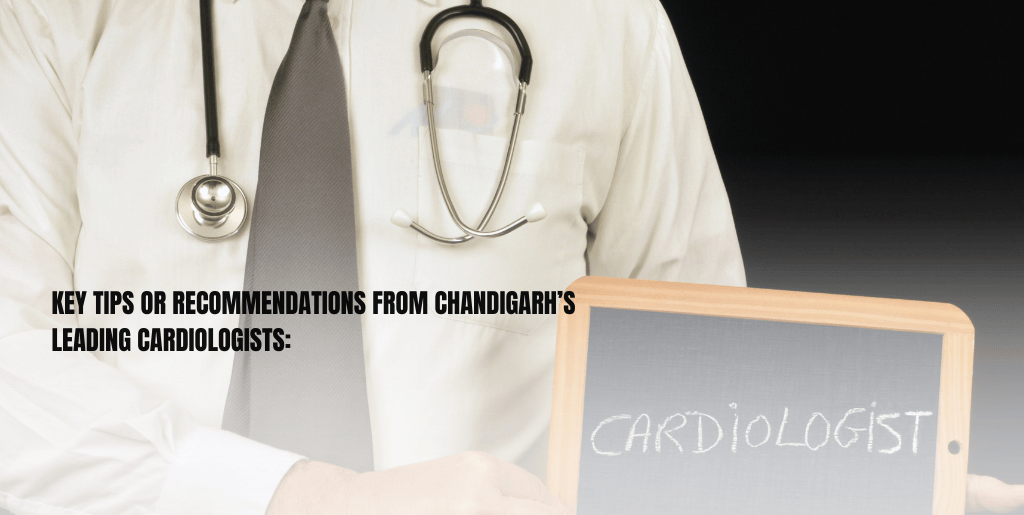
KEY TIPS OR RECOMMENDATIONS FROM CHANDIGARH’S LEADING CARDIOLOGISTS:
- Healthy Diet: Prioritize fruits, vegetables, whole grains, lean proteins, and healthy fats. Limit saturated and Trans fats, cholesterol, salt, and added sugars.
- Regular Exercise: Aim for at least 150 minutes of moderate aerobic activity or 75 minutes of vigorous activity per week, along with muscle-strengthening exercises.
- Weight Management: Maintain a healthy weight through a balanced diet and regular exercise.
- Stress Management: Incorporate stress-relieving techniques like yoga, meditation, and deep breathing exercises.
- Quitting Smoking: Smoking is a major risk factor for heart attacks, so quitting is crucial.
- Limited Alcohol Intake: If you drink alcohol, do so in moderation.
- Regular Check-ups: Get routine medical check-ups to monitor blood pressure, cholesterol, and diabetes levels.
- Medication Compliance: If prescribed medication, adhere to the treatment plan.
- Good Relationship with Doctor: Maintain open communication with your family doctor about your health concerns.
- What to Do If You See Someone Who Might Be Having a Heart Attack??
If someone is unconscious and you think they’re having a heart attack, first call an ambulance. Then, check if the person is breathing and has a pulse. If the person isn’t breathing or you don’t find a pulse, only then should you begin cardiopulmonary resuscitation (CPR).
- If you’re untrained in CPR, do hands-only CPR. That means push hard and fast on the person’s chest — about 100 to 120 compressions a minute.
- If you’re trained in CPR and confident in your ability, start with 30 chest compressions before giving two rescue breaths.
- While waiting for an ambulance, it may help to chew and then swallow a tablet of aspirin (ideally 300mg), as long as the person having a heart attack is not allergic to aspirin. Aspirin helps to thin the blood and improves blood flow to the heart.
- In hospital, treatment for a heart attack depends on the type of heart attack, and how serious it is.
- The 2 main treatments are:
- using medicines to dissolve blood clot
- surgery to help restore blood to the heart
RECOVERY from a heart attack
If you’ve had a heart attack, your heart may be damaged. This could affect your heart’s rhythm and its ability to pump blood to the rest of the body. You may also be at risk for another heart attack or conditions such as stroke, kidney disorders, and peripheral arterial disease (PAD).
You can lower your chances of having future health problems following a heart attack with these steps:
Physical activity: Talk with your health care team about the things you do each day in your life and work. Your doctor may want you to limit work, travel, or sexual activity for some time after a heart attack.
Lifestyle changes: Eating a healthier diet, increasing physical activity, quitting smoking, and managing stress—in addition to taking prescribed medicines—can help improve your heart health and quality of life. Ask your health care team about attending a program called cardiac rehabilitation to help you make these lifestyle changes.
Cardiac rehabilitation: Cardiac rehabilitation is an important program for anyone recovering from a heart attack, heart failure, or other heart problem that required surgery or medical care. Cardiac rehab is a supervised program that includes:
- Physical activity.
- Education about healthy living, including healthy eating, taking medicine as prescribed, and ways to help you quit smoking.
- Counseling to find ways to relieve stress and improve mental health.
A team of people may help you through cardiac rehab, including your health care team, exercise and nutrition specialists, physical therapists, and counselors or mental health professionals.
FACTS ABOUT HEART ATTACKS
Heart attacks happen to both men and women and those assigned male and female at birth. Although they are more likely as you get old, there are many risk factors—including high blood pressure, high levels of LDL (“bad”) cholesterol, diabetes, and whether you smoke—that you can change.
Types of heart attacks: When someone has a heart attack, you may hear some of these terms used:
- STEMI (ST-elevation myocardial infarction): A heart attack where a coronary artery is completely blocked
- NSTEMI (Non-ST-elevation myocardial infarction): A heart attack where a coronary artery is narrowed enough to greatly reduce blood flow but is not totally blocked
- MINOCA (myocardial infarction with nonobstructive coronary arteries): A heart attack in which no blockages are seen in the main coronary arteries.
Heart attack vs. cardiac arrest
A sudden cardiac arrest is actually not a heart attack. You can think of a heart attack as a problem within the heart’s arteries, whereas a sudden cardiac arrest means the heart’s electrical system is suddenly not working right, causing the heart to stop pumping.
Heart attack vs. angina
Angina also isn’t a Heart Attack Treatment in Chandigarh. It’s a symptom, and sometimes it can signal a heart attack. It means chest pain. And while it can happen with a heart attack, it can also happen for other reasons. The sensations may happen with normal activities or exertion, but then go away with rest or when you take nitroglycerin.
With angina, you may feel:
- Pressure, pain, squeezing, or a sense of fullness in the centre of the chest
- Pain or discomfort in the shoulder, arm, back, neck, or jaw
